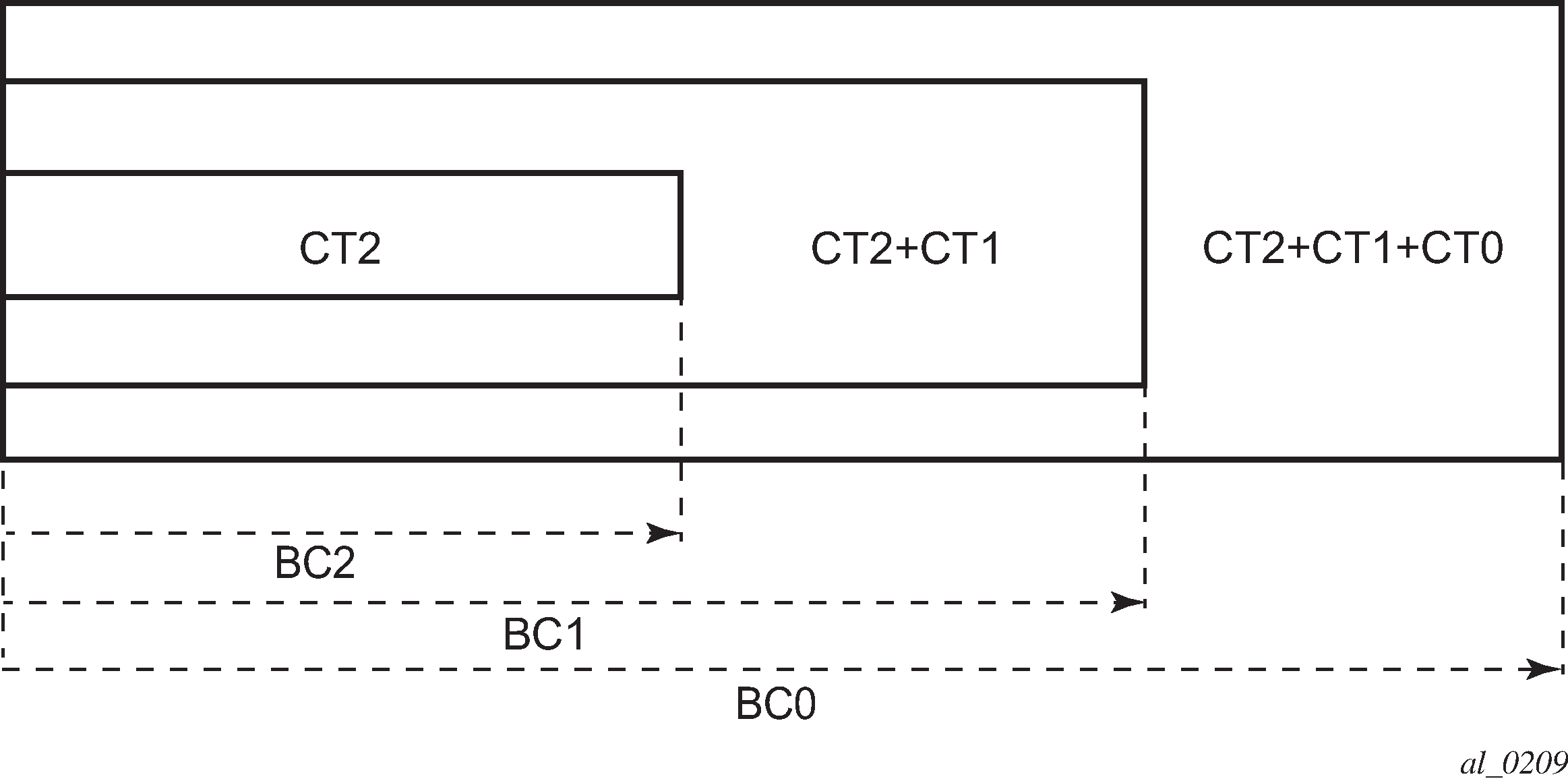To allow different levels of booking of network links under normal operating conditions and under failure conditions, it is necessary to allow sharing of bandwidth across class types.
This feature introduces the Russian-Doll Model (RDM) DiffServ TE admission control policy described in RFC 4127, Russian Dolls Bandwidth Constraints Model for Diffserv-aware MPLS Traffic Engineering. This mode is enabled using the following command: config>router>rsvp>diffserv-te rdm.
The Russian Doll Model (RDM) LSP admission control policy allows bandwidth sharing across Class Types (CTs). It provides a hierarchical model by which the reserved bandwidth of a CT is the sum of the reserved bandwidths of the numerically equal and higher CTs. Figure: RDM admission control policy example shows an example.

CT2 has a bandwidth constraint BC2 which represents a percentage of the maximum reservable link bandwidth. Both CT2 and CT1 can share BC1 which is the sum of the percentage of the maximum reservable bandwidth values configured for CT2 and CT1 respectively. Finally, CT2, CT1, and CT0 together can share BC0 which is the sum of the percentage of the maximum reservable bandwidth values configured for CT2, CT1, and CT0 respectively. The maximum value for BC0 is of course the maximum reservable link bandwidth.
What this means in practice is that CT0 LSPs can use up to BC0 in the absence of LSPs in CT1 and CT2. When this occurs and a CT2 LSP with a reservation less than or equal to BC2 requests admission, it is only admitted by preempting one or more CT0 LSPs of lower holding priority than this LSP setup priority. Otherwise, the reservation request for the CT2 LSP is rejected.
It is required that multiple paths of the same LSP share common link bandwidth because they are signaled using the Shared Explicit (SE) style. Specifically, two instances of a primary path, one with the main CT and the other with the backup CT, must temporarily share bandwidth while MBB is in progress. Also, a primary path and one or many secondary paths of the same LSP must share bandwidth whether they are configured with the same or different CTs.